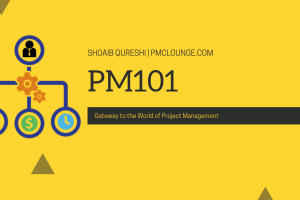
Project Management Essentials
Project management is a key part of business improvement initiatives. When significant initiatives are championed, chances are your affiliate’s Project Management team probably comes into play. But what about when you are trying to manage a small project? Great solutions come from insight and anticipation, which you get from on-the-job experience. Often this makes you the best person to manage a project in your realm of business. Knowing project management fundamentals can help you get your ideas off the ground so that its true value is successfully realized. First, let’s look at key traits of great project managers:
- Effective project managers understand the inner workings of their organizations and know enough about their products/services to hold intelligent conversations with (1) customers, (2) stakeholders, (3) suppliers, and (4) functional leaders within the organization.
- The best project managers are excellent listeners, and view exchanges with the above groups as learning opportunities.
- Project managers communicate clearly, concisely, and frequently with stakeholders.
- There are times when interpersonal skills are not enough to garner the support needed from the organization on a project. In these cases, project managers use senior leadership support to get things done. Project managers are very good at scheduling update forums with leaders to ensure that all business functions are making the project a priority.
Second, you need to recognize that project scope includes three main stages if you want to fully realize your idea: 1. Business analysis: The continuum begins with an idea; for example, you have analyzed a process and identified a more efficient way to get the same result. Review with leadership to ensure this new process is aligned with business objectives before moving forward. Make sure key players and leaders give support and are in agreement with the project objectives. 2. Project management: In this stage you identify deliverable’s, coordinate the work of others and a reasonable execution plan, which can be as simple as a To-do List or as detailed as a Gantt chart. Take the ideas of doing this alone out of your head. Talk to other people, try to obtain the experience that other people have had, their lessons learned, and incorporate them into what you are doing. Don’t be afraid to ask for help. Manage risk by asking “What is the thing that could create the most trouble for my project?” and then allocate your time to address those risks. Establish relationships with stakeholders because when you have good relationships with people, you have trust. And with trust comes honesty. It’s quicker and it’s more efficient in your communications. By being very honest in your communication, you can ultimately solve problems more quickly. 3. Organizational change: To ensure the project is a success and deliverables are incorporated into the day-to-day workings of employees, you must incorporate organizational change. Engage change management to make sure new deliverables are utilized to full capabilities, which make your project successful. The last thing you want is to spend time and energy on a fantastic new process or tool that no one uses. Create true value by achieving adoption of your solution. This means affected employees must embrace change. Change people’s perception as to what processes to use and how to use the new processes. Easier said than done, right? To do so, communicate with them. Include them in the process. Listen to feedback and potential roadblocks they share, so that the solution you bring to the table is easily accepted and implemented. Finally, be sure to provide implementation tools, like training, and continue to keep channels of communication open. Finally, before you dive headfirst into starting any project, you want to answer these questions:
- Why – though it seems so obvious, sometimes the why question is never asked! Sometimes you get so used to being assigned projects with little to no evaluation let alone business case justification, that the fundamental question of “Why are we doing this project?” does not get asked. Really delving into this question will allow you to get at the drivers and benefits that the project is to deliver which will allow you to deliver a project to your customer’s and stakeholders’ satisfaction.
- What – this is really the first question you ask when you’re trying to gather requirements for your project to define the scope. It gets no simpler than “What do we do?”
- Who – who are your stakeholders, team, , sponsors, and customers (both internal and external) who will ultimately benefit from your project being completed?
- When – sometimes this question gets asked before all the questions above get answered. You need to know why, what and who will be part of your project before you can adequately answer when it will get completed.
- Where – then after all is said and done, where will your project be done? Where will it be delivered?
Only when all your core questions have been answered can you answer the question of “how” you will complete your project.



